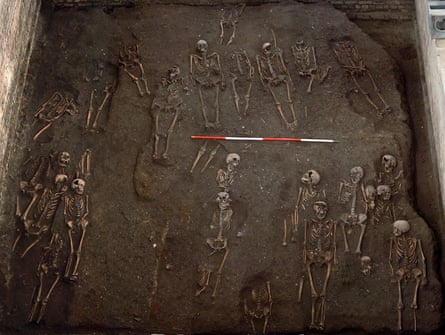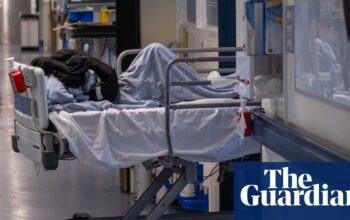Researchers at Cambridge University have pieced together the life histories of numerous medieval citizens of the city by carefully studying their skeletal remains. Through the use of extensive scientific data, they have shed light on the lives of underprivileged individuals who were not documented by name.
Through studying the skeletal remains of over 400 individuals, both adults and children, who were laid to rest in the vicinity of a medieval hospital between 1200 and 1500 AD, the scientists have constructed a thorough understanding of the lifestyles, well-being, and physical features of the inhabitants of Cambridge during this time period.
The researchers also discovered insights into the functioning of the charitable organization’s medieval “system of benefits” and how they determined deserving recipients in what was likely a vast “ocean of need”.

Upon investigation, it was found that the hospital’s deceased occupants did not all belong to the same social group. In fact, they consisted of various individuals such as orphaned children, educated individuals, and a group known as the “shame-faced poor” – those who were once well-off but had fallen on difficult circumstances and were considered deserving of aid.
In 2010, the location of the St. John the Evangelist hospital was examined and numerous graves were discovered. In a recent study, specialists in DNA and isotope analysis, human skeletal variation, and various other fields analyzed up to 50 distinct traits of each skeleton. They have created a comprehensive dataset for medieval England, which is believed to be one of the most extensive of its kind.
A recently released website, debuted on Friday alongside a published study in Antiquity, shares the narratives of individuals discovered during the research. Among them is a stout, dark-haired man referred to as “Wat” by specialists, who was raised on a nourishing diet and managed to survive multiple outbreaks of the Black Death. However, he appears to have faced difficulties and passed away from cancer at around 60 years old.
Maria, another person, was of short stature due to growing up poor and performing physical labor prior to developing tuberculosis. She most likely received treatment at a hospital where her nutrition improved, but unfortunately passed away in her early twenties.
10 male skeletons were determined to be potential university scholars due to the balanced structure of their arm bones. This indicated that, unlike the majority of young male skeletons, they did not engage in physically demanding labor.
According to John Robb, the lead researcher of the study and a professor of archaeology at Cambridge University, the individuals in the hospital were not just from the underprivileged class. There were various reasons that led people to be admitted there, providing insight into the inner workings of the hospital. However, due to limited capacity, only a select few could receive assistance, raising the question of how decisions were determined.
According to the authors’ paper, it is probable that the reason for the hospital’s 300-year survival is due to their ability to cater to various individuals and appeal to different donors’ emotions.
Source: theguardian.com


